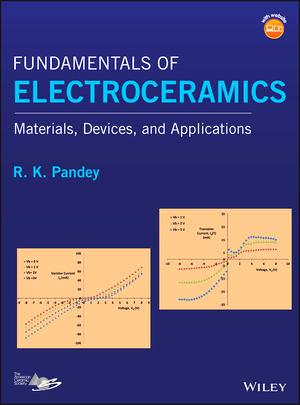Torrent details for "Fundamentals of Electroceramics - Materials, Devices and Applications (gnv64)" Log in to bookmark
Controls:
Category:
Language:
 English
EnglishTotal Size:
14.32 MB
Info Hash:
2aa52b254a520016ebe1dfbe5d91b6270bfcdcf2
Added By:
Added:
10-12-2018 14:50
Views:
1,325
Health:

Seeds:
0
Leechers:
0
Completed:
28

Fundamentals of Electroceramics - Materials, Devices and Applications
By R.K.Pangey
Wiley | January 2019 | ISBN-10: 1119057345 | 276 Pages | PDF | 14.3 mb
https://www.amazon.com/Fundamentals-Electroceramics-Materials-Devices-Applications/dp/1119057345
The first textbook to provide in-depth treatment of electroceramics with emphasis on applications in microelectronics, magneto-electronics, spintronics, energy storage and harvesting, sensors and detectors, magnetics, and in electro-optics and acousto-optics
Electroceramics is a class of ceramic materials used primarily for their electrical properties. This book covers the important topics relevant to this growing field and places great emphasis on devices and applications. It provides sufficient background in theory and mathematics so that readers can gain insight into phenomena that are unique to electroceramics. Each chapter has its own brief introduction with an explanation of how the said content impacts technology. Multiple examples are provided to reinforce the content as well as numerous end-of-chapter problems for students to solve and learn. The book also includes suggestions for advanced study and key words relevant to each chapter.
Provides an in-depth treatment of electroceramics with the emphasis on fundamental theoretical concepts, devices, and applications with focus on non-linear dielectrics
- Emphasizes applications in microelectronics, magneto-electronics, spintronics, energy storage and harvesting, sensors and detectors, magnetics and in electro-optics and acousto-optics
- Introductory textbook for students to learn and make an impact on technology
- Motivates students to get interested in research on various aspects of electroceramics at undergraduate and graduate levels leading to a challenging career path.
- Includes examples and problem questions within every chapter that prepare students well for independent thinking and learning.
About the Author
R. K. Pandey, PhD, is Ingram Professor Emeritus of Texas State University, San Marcos, TX, Cudworth Professor Emeritus of the University of Alabama, Tuscaloosa, AL, and Professor Emeritus of Texas A&M University, College Station, TX. He is also a Fellow of the American Ceramic Society, a Life Senior Member of the IEEE, and a Senior Member of the American Physical Society.
CONTENTS
1.Nature and types of solid materials;
2. Processing of Materials;
3. Methods for Materials Characterization;
4. Binding Forces in Solids and Essential Elements of Crystallography;
5. Dominant Forces and Effects in Electroceramics;
6. Coupled Nonlinear Effects in Electroceramics;
7. Elements of Semiconductor;
8. Electroceramic Semiconductor Devices;
9. Electroceramics and Green Energy;
10.Electroceramic Magnetics;
11. Electro-optics and Acousto-optics.











































